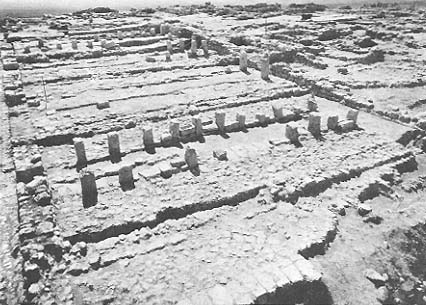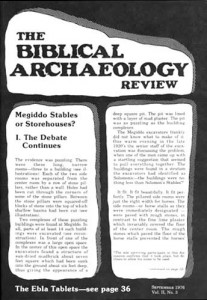I. The Debate Continues

The evidence was puzzling. There were these long, narrow rooms—three to a building (see illustrations). Each of the two side rooms was separated from the center room by a row of stone pillars, rather than a wall. Holes had been cut through the corners of some of the stone pillars. Between the stone pillars were squared-off blocks of stone into the top of which shallow basins had been cut (see illustration).
Two complexes of these puzzling buildings were found at Megiddo. In all, parts of at least 14 such buildings were excavated (see reconstruction). In front of one of the complexes was a large open space. In the center of this open space the excavators found a structure of sun-dried mudbrick about seven feet square which had been sunk into the ground about six feet deep, thus giving the appearance of a deep square pit. The pit was lined with a layer of mud plaster. The pit was as puzzling as the building complexes.
The Megiddo excavators frankly did not know what to make of it. One warm evening in the late 1920’s the senior staff of the excavation was discussing the problem, when one of the men came up with a startling suggestion that seemed to pull everything together. The buildings were found in a stratum the excavators had identified as Solomonic—the buildings were nothing less than Solomon’s Stables!a
Already a library member? Log in here.
Institution user? Log in with your IP address.

